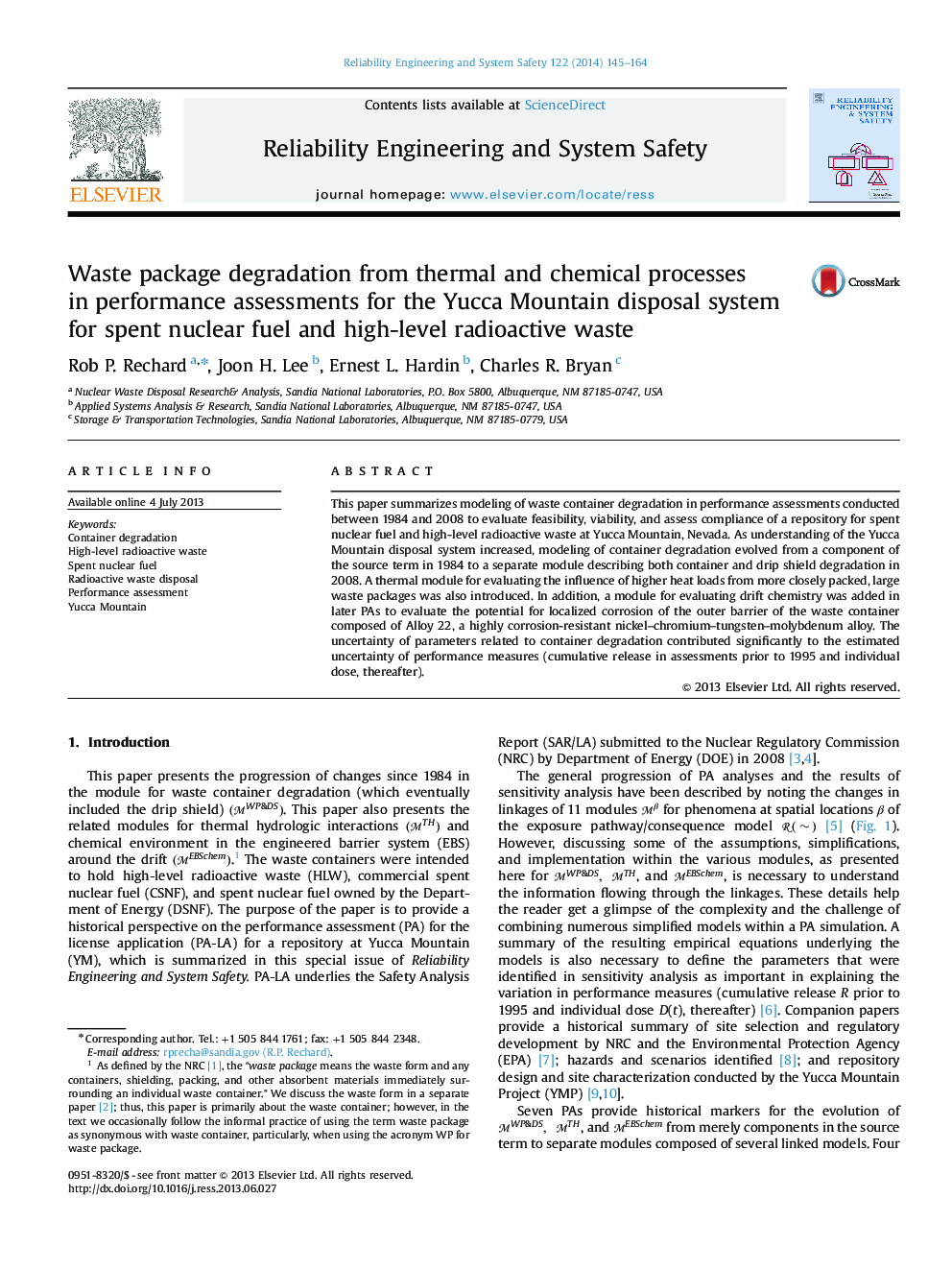| Article ID | Journal | Published Year | Pages | File Type |
|---|---|---|---|---|
| 805600 | Reliability Engineering & System Safety | 2014 | 20 Pages |
•Progression of container modeling from an assumption of complete failure before 1993 to a stochastic description after 1995 is described.•Introduction of thermal-hydrologic model to examine interaction between the engineered and natural barrier, and container degradation is described.•The introduction of a water chemistry module to evaluate the possibility of localized corrosion of the container is described.•The addition of seismic damage models to evaluate container damage from drift degradation and container movement is described.
This paper summarizes modeling of waste container degradation in performance assessments conducted between 1984 and 2008 to evaluate feasibility, viability, and assess compliance of a repository for spent nuclear fuel and high-level radioactive waste at Yucca Mountain, Nevada. As understanding of the Yucca Mountain disposal system increased, modeling of container degradation evolved from a component of the source term in 1984 to a separate module describing both container and drip shield degradation in 2008. A thermal module for evaluating the influence of higher heat loads from more closely packed, large waste packages was also introduced. In addition, a module for evaluating drift chemistry was added in later PAs to evaluate the potential for localized corrosion of the outer barrier of the waste container composed of Alloy 22, a highly corrosion-resistant nickel–chromium–tungsten–molybdenum alloy. The uncertainty of parameters related to container degradation contributed significantly to the estimated uncertainty of performance measures (cumulative release in assessments prior to 1995 and individual dose, thereafter).
